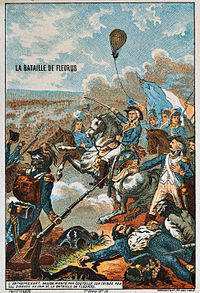
Balloons and kites were the first inventions used in aerial warfare and their primary role was reconnaissance. Balloons provided an reliable and stable means of elevating an observer high over the battlefield to obtain a birds-eye view of troop positions and movements. An early instrument of aerial intelligence collection, they were also useful for creating accurate battlefield maps, an important ingredient for battlefield success. Incendiary balloons also have a long history. The incendiary balloons carry hot air or something that can catch fire to destroy enemy territory. They could also hold small bombs for combat. The history of military ballooning dates back to the late 18th century, when the Montgolfier brothers, Joseph-Michel and Jacques-Étienne, first demonstrated the potential of hot-air balloons for military use. The first recorded military use of balloons was during the French Revolutionary Wars, when the French military used balloons to gather intelligence on the movements of the enemy. Balloons were also used during the American Civil War, where they were used for reconnaissance and communication. Balloons had a decline after several incidents in the interwar period.
In the late 19th century, military ballooning began to evolve, as advances in technology allowed for the development of more sophisticated balloons and equipment. Balloons were equipped with cameras, telegraphs, and other instruments that allowed for more detailed and accurate reconnaissance and observation.
During World War I, military ballooning reached its peak of development, as balloons were used extensively for reconnaissance and observation by both the Central powers and the Entente. Balloons were used to spot enemy movements, direct artillery fire, and provide early warning of enemy attacks. They also used for transporting goods, messages, and people across the battlefield.
After World War I, the use of military balloons declined, as aircraft and other technological innovations made them less relevant. However, balloons were still used for some specialized purposes, such as for meteorological observations and for training pilots. During the Cold War, the United States sent hundreds of high-altitude balloons over Eastern Bloc countries to gather intelligence on their nuclear capabilities, before replacing them with its newer spy planes.
Today, military ballooning is not widely used, as other technologies such as drones and satellite have taken over its main roles.